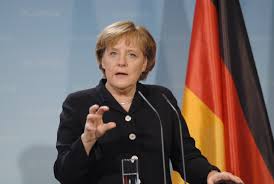
German Chancellor Angela Merkel announced something pretty surprising this week — she is going to "drastically decrease" the number of refugees entering Germany.
And it turns out the real reason for this is pretty simple.
The change of heart is a big deal because originally Merkel pledged to not put quotas on the number of refugees entering Germany since the EU is currently experiencing the worst refugee crisis since World War II.
Her willingness to accept refugees had helped earn her a nomination for a Nobel Peace Prize and the distinction of being Time’s Person of the Year.
But this chart, which was embedded in Goldman Sachs’ massive Fornightly Thoughts report this week, holds to key as why Merkel has had to signal a compromise over her open-door policy with her critics from within her own conservative party.
 Goldman Sachs
Goldman Sachs
Merkel had initially resisted pressure from allies within her Christian Democratic Union to put a cap on the number of refugees entering Germany, which is expected to top 1 million this year.
But the chart shows that the surge is absolutely massive in comparison to other years. Simply, it’s too much, too soon.
The number of refugees has hit a 20-year high because of the growing list of conflicts. Last month, Deutsche Bank, citing UN data, said more than 60 million people worldwide had fled their homes.
Germany has registered some 760,000 people entering the country from January to October, and government officials expect the number of asylum seekers to rise further until year-end.
Deutsche Bank highlighted in a report to clients how each country takes in a vastly different proportion of refugees — Germany accounts for the largest share. The note says "the influx of refugees has raised net immigration to Germany to the record level of more than one million."



